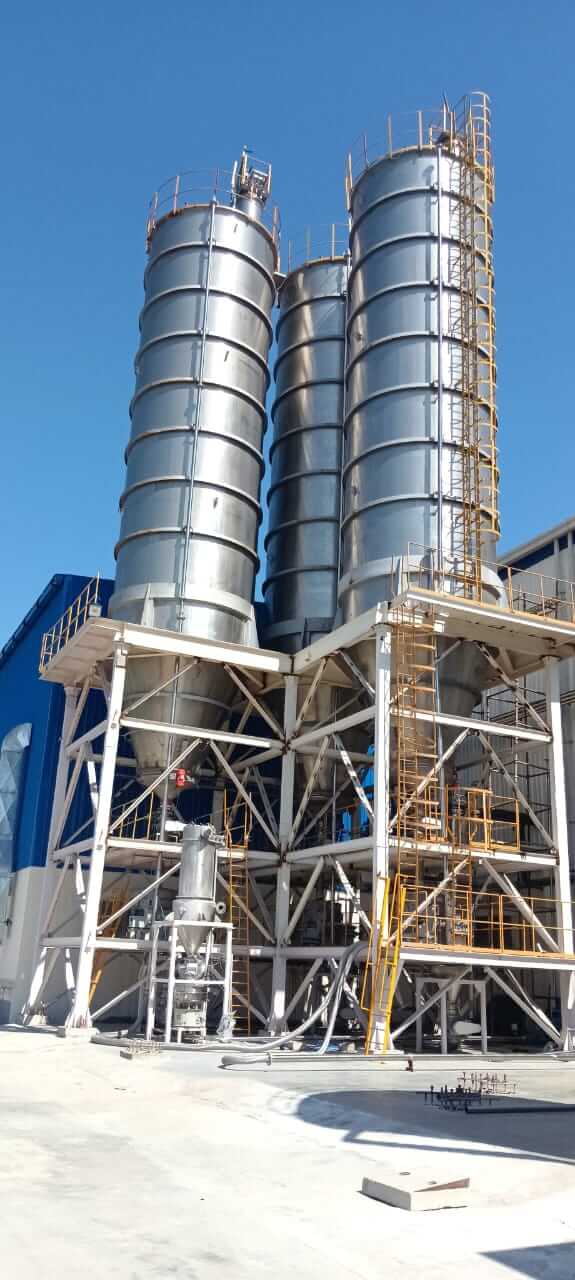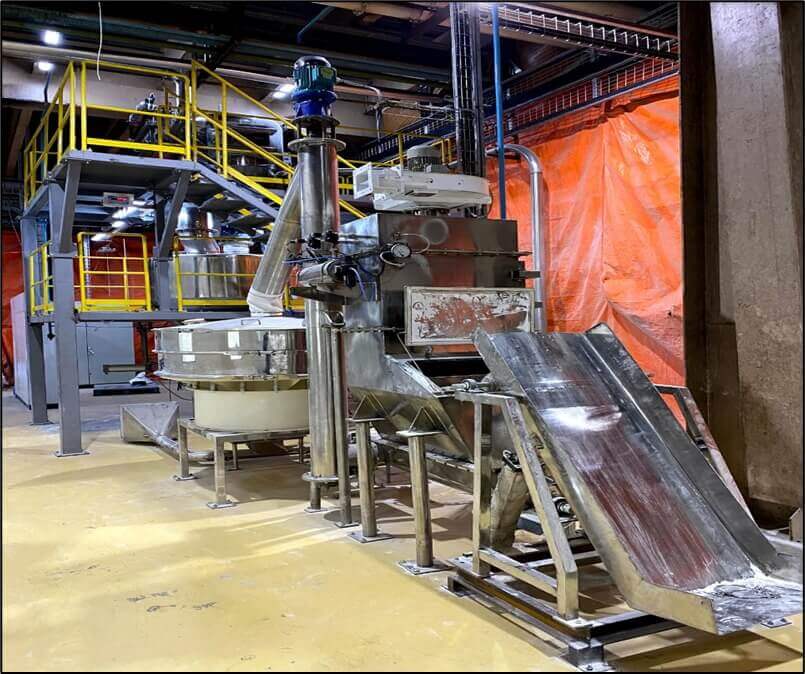
In the modern era, wheat has become one of the most important and widely consumed food crops in the world. Because Wheat always in extreme demand & used to make variety of food products including bread, noodles, muffins, pasta, cakes, pastries, biscuits, cereal bars, sweet and savory snack foods, crackers, crisp-breads, sauces and confectionery. As a result, efficient and reliable wheat tanker unloading system is required to handle the large quantities of wheat or flour that are transported from farms to processing plants. In this blog post, we will explore the design and operation of a tanker unloading system for wheat or Flour.
Wheat flour handling system is an important aspect of the food industry in India. India is the second-largest producer of wheat in the world, and as a result, the country has a significant wheat flour processing industry. We all knows that Wheat flour is an important source of carbohydrates. It is the leading source of vegetable proteins, having a protein content of about 13%, which is relatively high compared to other major cereals.
In particular, the unique properties of the gluten protein fraction allow the processing of wheat flour to produce bread, other baked goods, noodles and pasta, and a range of functional ingredients.
In India, 65% of the population consumes wheat flour, making it the second most important staple food after rice, and this number is anticipated to rise further due to changes in dietary preferences. A fundamental raw ingredient, wheat is employed in numerous areas of the food business. Wheat is a basic raw material used in many different sectors of the food industry.

Relationship between the Wheat Tanker Unloading System and the Pneumatic Conveying System
The Tanker Unloading System consists of a series of mechanical and pneumatic components that work together to ensure efficient and safe unloading of the tanker. Tanker unloading systems use pneumatic conveying system to move dry, solid bulk material from tanker trucks to storage silos. The system typically includes an air-slide conveyor and a storage silo with a receiving hopper. The air slide conveyor uses a low-pressure air stream to move the wheat from the tanker to the receiving hopper.
So, similar as wheat tanker unloading systems use pneumatic conveying to move wheat or flour from tanker trucks to storage silos. Tanks typically have a size of 25mcub, sometimes more, and can handle the equivalent of 960 bags or 30 Super sacks in one operation. Factories have a lot of interest in receiving their bulk materials in tankers, provided they have silos to hold the discharge material. This approach enables the conveyance of a large amount of product in one go, reduces the need for manual handling, and results in higher factory throughput and efficiency.
In addition to handling bulk solids material like flour and sugar, chemicals, minerals, and plastics are also transported in road silo tankers. To successfully empty the tank, discharge rapidly enough, and deliver the product to a silo, this type of bulk solids tanker needs to be pneumatically emptied. Here are some of the key components of a Wheat Tanker Unloading System:
Wheat Unloading System: Key Elements and Considerations for Improved Efficiency and Safety
The wheat transfers system and wheat tanker unloading system typically involve the following processes:
-
Tanker unloading station :
A wheat tanker truck arrives at the facility and is positioned at the designated unloading area. Basically, this is the location where the tanker is positioned for unloading. It includes an area for the tanker to park and may also include a platform for workers to access the tanker. -
Tanker inspection :
The tanker is inspected for any damage or contamination before it is unloaded. -
Tanker connection :
The tanker is connected to the unloading system through hoses or pipes. -
Transfer system :
The transfer system is responsible for moving the material from the tanker to the storage or processing equipment. It typically consists of a positive-pressure blower or vacuum-duty blower, along with associated piping and valves. -
Control system :
The control system is used to monitor and control the flow of material during the unloading process. It may include sensors, pressure gauges, pressure switches, vacuum gauges, vacuum switches, solenoid valves, and other instrumentation. -
Safety features :
Tanker unloading systems typically include safety features such as emergency shutdown systems, pressure relief valves, and grounding systems to prevent static electricity build-up. -
Filtration system :
A filtration system may be included in the unloading system to remove any solids suspended in air or the conveying medium before they are discharged to the atmosphere. Basically, the wheat is filtered to remove any impurities, such as stones or foreign objects. -
Silo storage or process vessel :
The silo storage or process vessel is the final destination of the product being unloaded. It may be a storage tank, reactor vessel, or other type of vessel used in the manufacturing or processing process. -
Maintenance of equipment :
Maintenance of equipment such as valves, clamps, couplings, hoses, or pipes, are necessary to ensure the unloading system is in good working condition and to prevent any leaks or spillage.
The wheat transfers system and wheat tanker unloading system may involve additional steps depending on the specific facility and equipment used.
Exploring the Key Components of Wheat Tanker Unloading Systems
A tanker unloading system is a process used to transfer bulk material, such as wheat, flours, powders or granules, from a tanker truck to a storage silo. The system typically includes several components:
- Rotary Airlock Valve:
A rotary airlock valve is a device that is used to control the flow of wheat/flour from the tanker truck into the storage silo. The valve has a rotating drum with vanes or blades that open and close as the drum rotates, allowing wheat to pass through while preventing air or gas from entering the silo. The rotary airlock valve helps to regulate the flow of material and prevent the formation of air pockets or blockages in the system. - Storage Silo:
The storage silo is a large container used to store the bulk material like wheat or flours being transferred from the tanker truck. The silo is designed to hold the wheat until it is needed for further processing or use. The silo is typically equipped with a level sensor that detects when the silo is full and signals the system to stop the flow of material. - Diverter Valve:
A diverter valve is a device used to redirect the flow of wheat or flour from one location to another. In a Tanker unloading system, a diverter valve may be used to direct the material from the tanker truck to different storage silos or processing equipment. - Other Components:
Other components commonly used in a wheat tanker unloading system include a blower or vacuum pump to create the airflow necessary to transfer the material, filters to remove any dust or debris from the material, and a control system to monitor and regulate the process.
Overall, the various components of a Wheat tanker unloading system work together to safely and efficiently transfer wheat or flour from a tanker truck to a storage silo for further processing or use.
What are the Benefits of Tanker unloading system?
- Reduction in labour and package costs, thereby improving loading and unloading efficiency.
- The loss rate of powder by tanker transport is about 0.5%, while it is about 2.5–5% by bags.
- Helps more effectively prevent humidity in Powders during storage and transit.
- Efficient and Effective Material Handling
Application of Tanker Unloading System
- Cement, fly ash, mining minerals
- Calcium carbonate, PVC, and plastic pellets
- Plastic powders, alumina, and bentonite
- Marble powder, soda ash, quartz, and sodium sulphate
- Wheat, flour, animal feed, seed, corn, rice, and sugar
- Salt and similar powdered and granular dry bulk solids
Knitcon Solutions Pvt Ltd is a leading provider and manufacturer of wheat tanker unloading systems based in Pune, India. With a reputation for quality, reliability, and innovation, we ensure you that our wheat tanker unloading system is designed to unload bulk quantities of wheat or flour efficiently and safely, with minimal loss and damage.
We understand the importance of reliability and efficiency in the wheat unloading process. That's why we work closely with our clients to design and manufacture custom wheat unloading systems that meet their specific needs and requirements. From initial consultation to installation and maintenance, our team of experts is dedicated to ensuring the highest level of quality and service.
So, whether you are a wheat processing plant, flour mill, or food processing company, Knitcons is the ideal partner for all your wheat unloading needs. Contact us today to learn more about our products and services and how we can help you optimize your wheat unloading process.